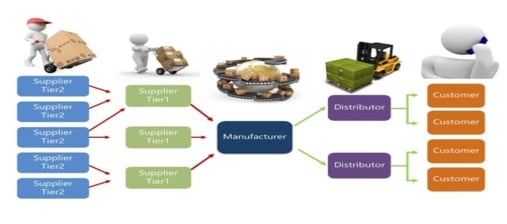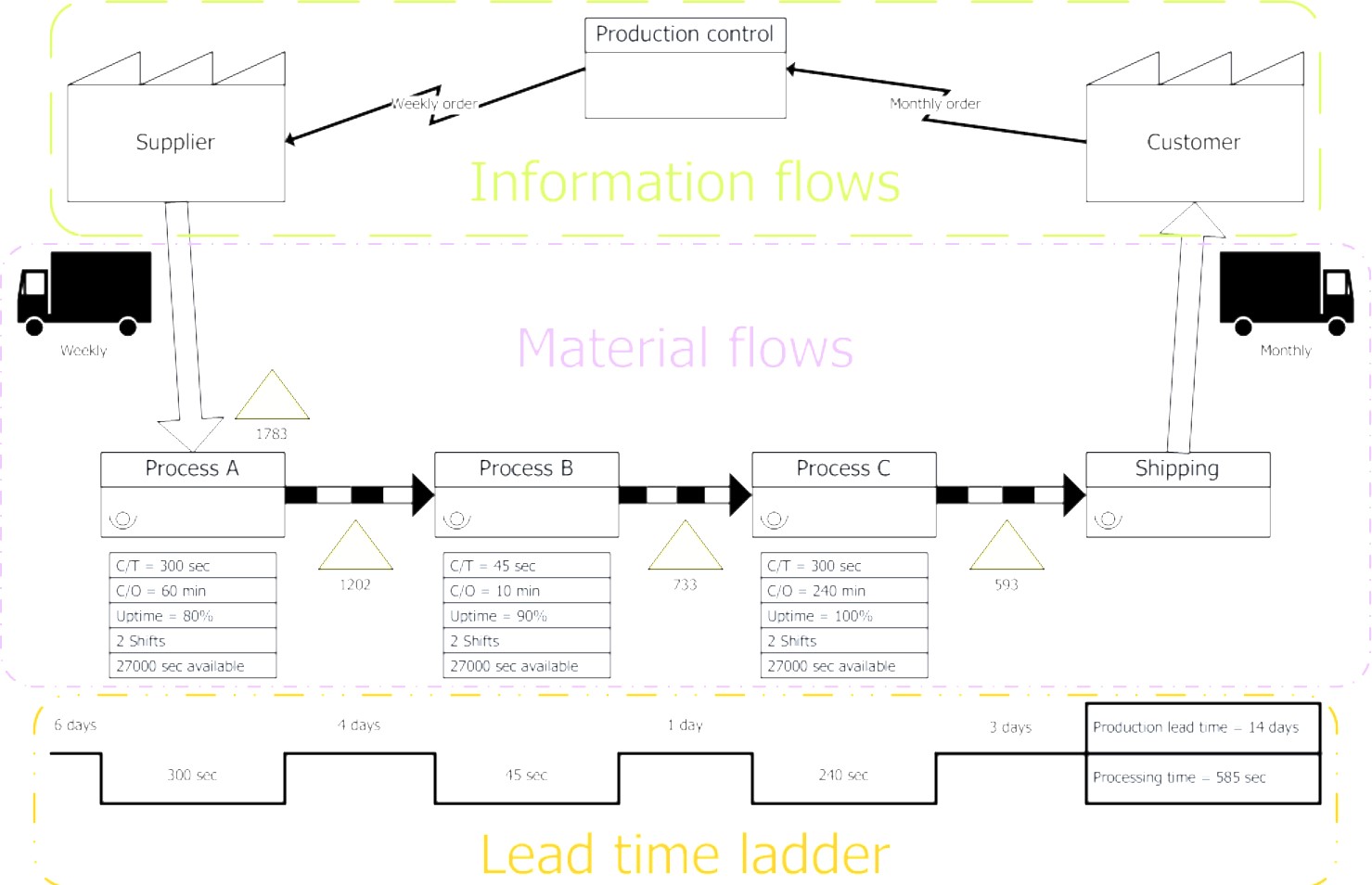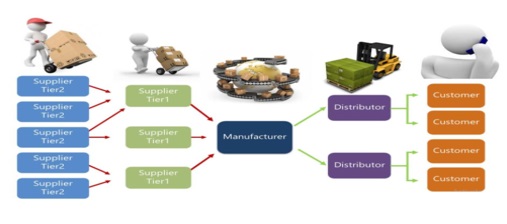Fig 1.
When you think of an item, do you consider what that must go through to get to your door? There are many links to consider regarding flow from point of generation (raw materials) to point of sales (Finished goods). A lot of people tend to forget about the importance of the supply chain and how that linkage if not strong will snap resulting in cost Implications in the thousands.
A simple definition is: - A supply chain is used to deliver products and services, from the raw-material to the customers, through physical distribution, flow of information, and cash which comprises of both processes and entities.

The example in Fig 1. Shows some of the links in the chain and each one of those links can have its own individual constraint whether it be process or as the model above shows, individual companies, these factors are not always considered.
To understand the steps to enable this product to flow you must start with a strategic fixed location of given parts, defining where your goods in will provide a stable starting point of receipted goods, if you know where they are you can process, if not it becomes a search which is co$$$t no different to the first S in 5S – SORT / SEIRI, do not reinvent the wheel. Simple small step by step approach
Next is the flow of your product – Value Stream Mapping Fig 2, this is a holistic, helicopter view of the steps through the factory to convert from raw material / product to manufactured part. Knowing the value stream, you understand the steps and the time variables to take it through the plant. This will show timelines and constraints to either accept and incorporate or focus fault diagnostics (e.g., 5 Why or RCA). Knowing the flow, you will then understand the variables of parts required and their minimal stock holding to again smooth the flow.

Fig 2.
Another way to increase confidence once barriers have been addressed/removed from the above situation is to set a pull system - components used in the manufacturing process are only replaced once they have been consumed so companies only make enough products to meet customer demand.
In automotive there were many forms of constraint, I worked in a tier one supply to the OEM, internally we had focussed on the Kaizen approach to take out the low hanging fruit, we had Value Stream Mapped the goods in through to the dispatch to the customer to also streamline and Six Sigma the machine variables to optimum performance, this gave maximum cost efficiency internal, then finally what a lot of companies do not do is to take the next step and focus on their supplier. I was part of a European team that covered all supplier companies to improve their flow and operations but not implicating safety and quality in any way. The timeline for Just In Time is very short and the cost associated stopping the OEM is major dollars per minute.
If you find your missing parts or your register shows it has been delivered and you cannot find it, you need to start with basics, spend the time to address the steps, put a stake in the ground, define your location points and what is required as a starting point. Simplify the steps and lock them in, re-educate, realign, and re-energise everyone to the approach to make life in the future state easier.
It never stops - Barcode, used correctly and I have seen it put to great effect in the UK – Barcoding your components and location points, this allows a flexible location practice that can protect your customers as well as your reputation to ensure those customers stay customers. I have seen it work to the extent where a quarantined part can be locked where it is located and the clearance is given to the Quality department to sanction ONLY – Lockdown, as their customer I tried and walked the system personally.
Supply chain has to be included in the thought process, if you only consider operations, you will constantly find yourself running short of parts which will damage the business model overall
With the views of the supply chain in mind we have the following coming up in the next months,
- In August online we have Optimising stores and systems - https://events.humanitix.com/imrt-ciwg-optimising-maintenance-stores-and-systems-hosted-online-by-opal-australian-paper
- September we will have a face to face in W.A. regards stores strategy from dysfunctional to set in place from Alcoa’s Roger Gibson – Final details soon.
- Supply Chain Roundtable meeting- in planning


